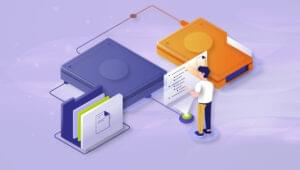In the not too distant future, England will be the first of many countries to begin introducing computer programming and coding classes to primary and secondary schools.
In this new system, students will be taught basic coding as soon as they enter school (at around 5 years old) and will continue to learn until their GCSEs are completed, when they can choose whether or not to pursue it further.
This is the first in a series of posts that I wanted to put together on coding and logical thinking education for children and why I think that it is so important for kids to become code-literate at as early an age as possible.
Breaking down the English experience
The English curriculum will be split into a number of key stages.
By the end of key stage one, students will be able to create and debug a variety of simple programs. Also, by this stage, they will know how to “safely and respectfully” make use of technology. They will also be encouraged to grow their ability to think logically and to use logical approaches to solving problems, notably a key area that many western curriculums don’t really cover at this stage of children’s learning experiences.
By key stage two, students will have learned the basics of designing and writing software and code geared towards unambiguous goals. This would include the control and simulation of physical systems (read they’re learning how to manipulate the internet of things). In this stage, pupils will also be taught the understanding of computer networks and to use their own logic and reasoning to spot and correct any errors that may present themselves in various algorithms.
Key stage three will see the students, now in secondary school, learning Boolean logic and understanding algorithms that mirror computational thinking. Additionally, they will learn how the various different hardware and software systems in computers work and communicate with one another and with other systems.
In key stage four, students, teachers and exam boards will have freedom over what they choose to learn/teach/examine and what they don’t. Opening up in this way and building on a solid shared base will allow experimentation and innovation to be rolled into individual curriculums and help focus on getting the most out of each student’s desired career.
The new English system represents a necessary (r)evolution in how children study and understand coding and logical thinking. It broadens the understanding that particularly primary-school age children have of what they can do with code and programming and opens up huge opportunities to shape their thinking early. My hope would also be that done the right way it provides primary school age girls with opportunities at the right time to interest and excite them in STEM subjects.
Michael Gove, the Education Secretary, said that “children learning how to code and program will raise the standard of learning to a whole new and exciting level. The future is bright for the first wave of children to come out of this education system”.
The teachers are not too far behind either. Not too long after Michael Gove made the announcement, the Department for Education, the Computing at School (CAS) Working Group and a variety of other organisations (Codecademy, for example) have began offering free coding classes in a number of programming languages (Ruby, Python, JavaScript and PHP). These classes are mostly focused on teachers given the need for teachers to get a real basis in understanding to be able to effectively run the new curriculum.
The Department for Education will give the vital goals for this whole course. From these objectives, the teachers will then select their preferred curriculum and resources they will employ in order to achieve the goals. This means that there will be no single approach to teaching the classes.
Outlining the ultimate objectives and letting schools and teachers decide their own curriculum and methodology will mean the ability to tailor to individual students and class needs – given the diversity of outcomes from a core understanding of code and logic-based thinking, the need for flexibility is high.
The future
In the UK, there are schools that are already running pilots in their classrooms. They are testing the new curriculum and providing feedback to allow for honing of the pilot programs. On the other side there will be many schools that will not be overly comfortable with the new curriculum. Not only will teachers have to undergo a lot of training to support it, many schools will not be able to offer the necessary resources to teach the classes, meaning roll-out will be difficult.
Even with the many difficulties of opening up this new curriculum, this evolution and revolution is worth taking the time to make. This new system will ensure than the next generation will not only be able to make the most of digital content, they will also be able to create it, something that will become a primary need for the growth economies of the future. Recognition by Britain of this need is laudable and past due.
I’d end this piece in asking what Australia is doing to mirror Britain’s move here – will we be at the forefront of the digital economy or will we fall behind? Without real change in government policy now I’d be assuming the latter rather than the former. I won’t be waiting for the government to make changes here, I’ll certainly be encouraging my own children to learn coding and logical thinking.
 Simon Julian
Simon JulianSimon was the GM and Head of Business at SitePoint, and a mentor at INCUBATE.




